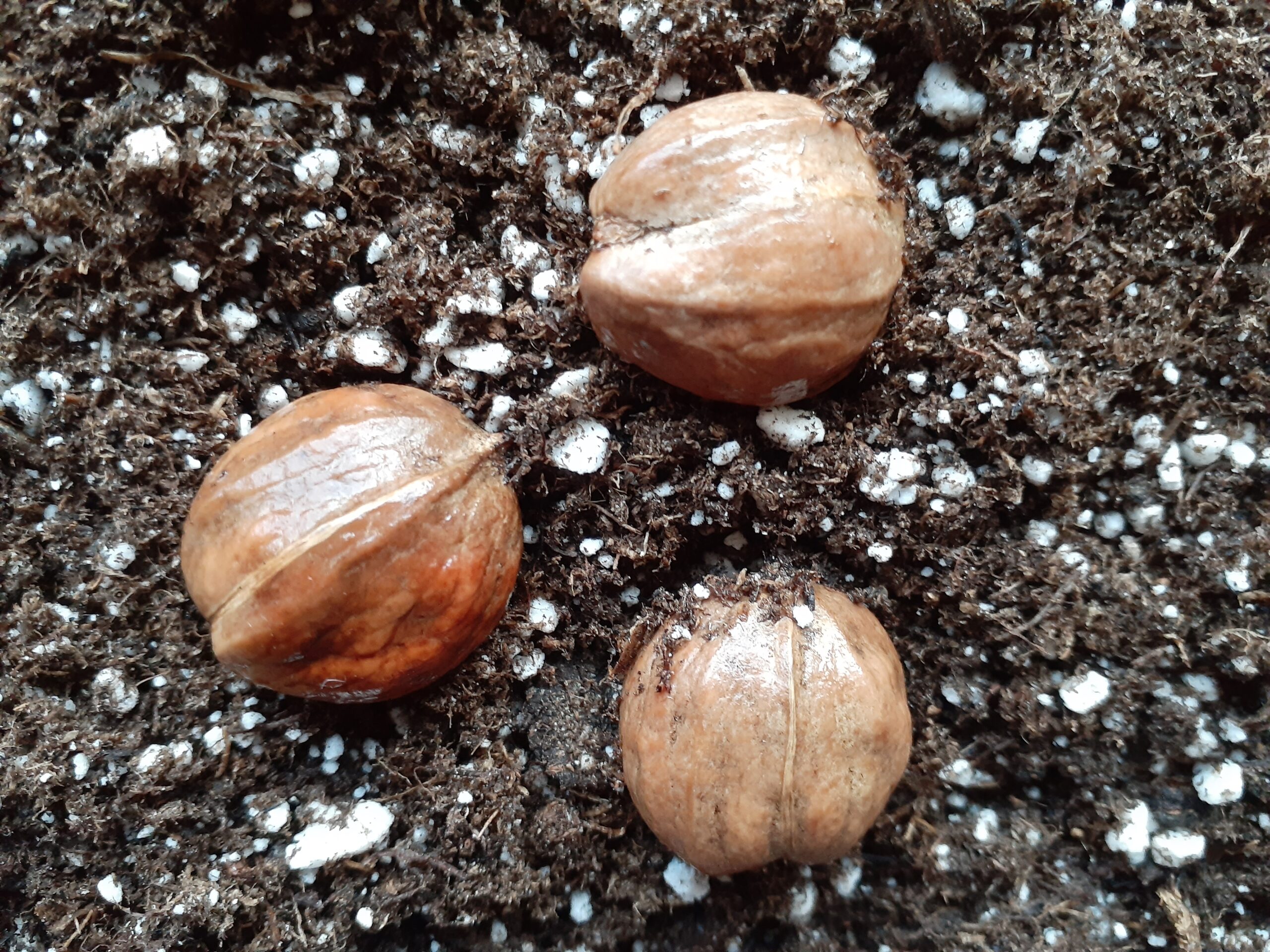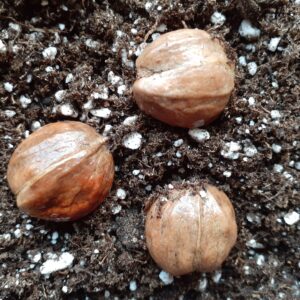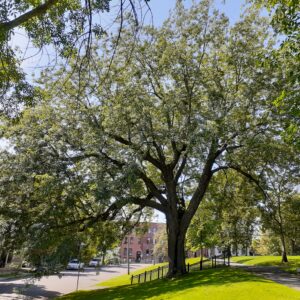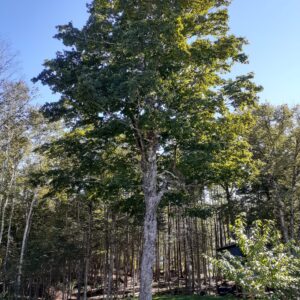Shagbark Hickory
Carya Ovata
Occurs naturally in Canada in Southern Ontario and along the St. Lawrence River. A slow grower ideally planted as a legacy for future generations. It can take up to 40 years for production of the prized edible nuts to begin. One of the hardest hardwoods in North America. All tree parts produce a small amount of the chemical juglone that inhibit growth of some plants in the root zone. The quantity of juglone, however, is significantly less than that of a walnut tree. Hickories have both male and female flowers on the same tree and are wind pollinated. Planting two or more trees will improve seed crop quantity through cross pollination. Mast seed crop occur every 3 to 5 years. The tree develops a strong taproot that can make it tricky to transplant.
Additional information
| Foliage | Deciduous |
|---|---|
| Locale | Native to North America |
| Height | Large (60-100ft) |
| Width | Wide |
| Form | Irregular, Oval |
| Growth Rate | Slow |
| Longevity | Long (over 100 years) |
| Hardiness Zones * | 4, 5 |
| Sun Exposure | Full Sun (over 6 hrs), Mostly Shade (slow growth), Partial Sun (4 to 6 hrs) |
| Soil Preferences * | Moist, Slightly Acidic, Well Draining |
| Soil Tolerances | Dry, Slightly Alkaline |
| Other Tolerances | Occasional Drought, Occasional Flooding |
| Ornamental Interest | Bark |
| Wildlife Value | Birds (fruits/seeds), Small Mammals (fruits/seeds) |
| Human Value | Carpentry (wood), Edible (seed), Fuel (wood) |
| Seed Collection | Ordered Online |
| Planting Considerations | Allelopathic, Messy Leaf Litter, Messy Seed Litter, Tricky to Transplant |





















